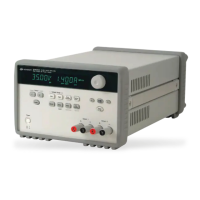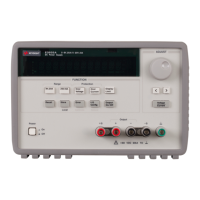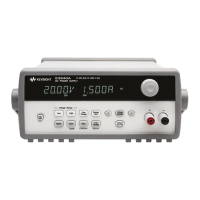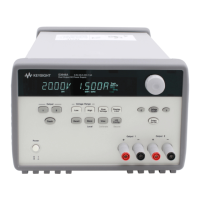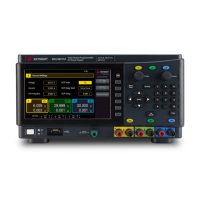The tests should be performed by qualified personnel. During performance verification tests, haz-
ardous voltages may be present at the outputs of the power supply.
Measurement techniques
Voltmeter
To ensure that the values read by the voltmeter during both the verification procedure and the
calibration procedure are not affected by the instantaneous measurement of the AC peaks of the output
current ripple, make several DC measurements and average them.
Current-monitoring resistor
The 4-terminal current shunt is used to eliminate output current measurement error caused by voltage
drops in the load leads and connections. It has special current-monitoring terminals inside the load
connection terminals. Connect the voltmeter directly to these current-monitoring terminals.
Electronic load
Many of the test procedures require the use of a variable load capable of dissipating the required power.
If a variable resistor is used, switches should be used to connect, disconnect, or short the load resistor.
For most tests, an electronic load can be used. The electronic load is considerably easier to use than
load resistors, but it may not be fast enough to test transient recovery time and may be too noisy for the
noise (PARD) tests.
Fixed load resistors may be used in place of a variable load, with minor changes to the test procedures.
Also, if computer controlled test setups are used, the relatively slow (compared to computers and
system voltmeters) settling times and slew rates of the power system may have to be taken into account.
"Wait" statements can be used in the test program if the test system is faster than the power system.

